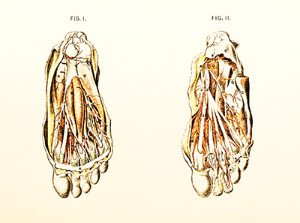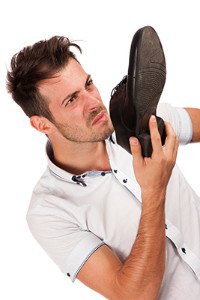
Wilmington (937) 382-2347
Fax
(513) 932-1606

Wilmington (937) 382-2347
Fax
(513) 932-1606
 One common injury often experienced when running is turf toe, also known as “an acute, traumatic bursitis of the first toe-metatarsal joint associated with tendonitis,” attributed to playing on artificial turf. Typically during normal running an athlete would be able to dig his or her big toe into the ground to propel forward. But on artificial turf, the big toe is displaced during the digging motion. This imbalance results from an abnormal pronation, or inward rolling, of the foot. Understanding the risk of injury that results from playing on artificial turf is important for prevention. Orthotics that aid in balancing the feet can also decrease the risk of injury.
One common injury often experienced when running is turf toe, also known as “an acute, traumatic bursitis of the first toe-metatarsal joint associated with tendonitis,” attributed to playing on artificial turf. Typically during normal running an athlete would be able to dig his or her big toe into the ground to propel forward. But on artificial turf, the big toe is displaced during the digging motion. This imbalance results from an abnormal pronation, or inward rolling, of the foot. Understanding the risk of injury that results from playing on artificial turf is important for prevention. Orthotics that aid in balancing the feet can also decrease the risk of injury.
Exercising your feet regularly with the proper foot wear is a great way to prevent injuries. If you have any concerns about your feet, contact Dr. Gerald Perelman. Our doctor will treat your foot and ankle needs.
How to Prevent Running Injuries
Many common running injuries are caused by overuse and overtraining. When the back of the kneecap starts wearing out and starts causing pain in your knee, this is commonly referred to as runner’s knee. Runner’s knee is a decrease in strength in your quadriceps and can occur if you’re not wearing properly fitted or supporting shoes. To prevent runner’s knee, focusing on hip strengthening is a good idea, as well as strengthening your quads to keep the kneecaps aligned.
What Are Some Causes of Running Injuries?
- One cause of a common running injury is called iliotibial band syndrome.
- Plantar fasciitis is also another common injury.
- Stress fractures can occur from overtraining, lack of calcium, or even your running style.
Best Ways to Prevent Running Injuries
- Wear footwear that fits properly and suits your running needs.
- Running shoes are the only protective gear that runners have to safeguard them from injury.
- Make a training schedule. Adding strengthening exercises as well as regular stretching can help keep you strong and limber and can lessen the possibility of injuries.
- Stretching keeps muscles limber; this will help you gain better flexibility.
If you have any questions please feel free to contact our offices located in Wilmington and Lebanon, OH. We offer the newest diagnostic and treatment technologies for all your foot and ankle needs.
 There are many different causes of numbness in your feet, ranging from trivial to potentially very serious. If your feet and legs are “falling asleep,” this is usually do to compression of the nerves. Because of this pressure, the nerves are not receiving the proper amount of blood and they are not able to communicate properly with the brain. Poor blood circulation to the lower extremities, especially the feet, can be a symptom of neuropathy. Diabetics should always take care to check their feet and make sure that nothing seems numb. Poor circulation might also be an indicator of peripheral artery disease (PAD). Make sure to see a podiatrist if you have numbness or feel that you have lack of blood flow to your feet.
There are many different causes of numbness in your feet, ranging from trivial to potentially very serious. If your feet and legs are “falling asleep,” this is usually do to compression of the nerves. Because of this pressure, the nerves are not receiving the proper amount of blood and they are not able to communicate properly with the brain. Poor blood circulation to the lower extremities, especially the feet, can be a symptom of neuropathy. Diabetics should always take care to check their feet and make sure that nothing seems numb. Poor circulation might also be an indicator of peripheral artery disease (PAD). Make sure to see a podiatrist if you have numbness or feel that you have lack of blood flow to your feet.
Poor circulation is a serious condition and needs immediate medical attention. If you have any concerns with poor circulation in your feet contact Dr. Gerald Perelman. Our doctor will treat your foot and ankle needs.
Poor Circulation in the Feet
Poor blood circulation in the feet and legs is can be caused by peripheral artery disease (PAD), which is the result of a buildup of plaque in the arteries.
Plaque buildup or atherosclerosis results from excess calcium and cholesterol in the bloodstream. This can restrict the amount of blood which can flow through the arteries. Poor blood circulation in the feet and legs are sometimes caused by inflammation in the blood vessels, known as vasculitis.
Causes
Lack of oxygen and oxygen from poor blood circulation restricts muscle growth and development. It can also cause:
Those who have diabetes or smoke are at greatest risk for poor circulation, as are those who are over 50. If you have poor circulation in the feet and legs it may be caused by PAD, and is important to make changes to your lifestyle in order to reduce risk of getting a heart attack or stroke. Exercise and maintaining a healthy lifestyle will dramatically improve conditions.
As always, see a podiatrist as he or she will assist in finding a regimen that suits you. A podiatrist can also prescribe you any needed medication.
If you have any questions please feel free to contact our offices located in Wilmington and Lebanon, OH. We offer the newest diagnostic and treatment technologies for all your foot and ankle needs.
Read more about Causes, Symptoms, and Treatment of Poor Blood Circulation in the Feet
 When the feet are kept wrapped up in thick socks and heavy winter boots, sweat is no surprise. Sweat from the feet is a natural occurrence, however there are a number of tips you can rely on to ease sweaty and potentially smelly feet: Take off your shoes as soon as you get home to air out the feet, rotate between shoes and avoid wearing the same pair consistently everyday, and wash the feet thoroughly when bathing, especially after exercise. If you are experiencing sweaty feet all year round, you may have a disorder called hyperhidrosis. Speak with your doctor in order to discuss treatment options for this condition.
When the feet are kept wrapped up in thick socks and heavy winter boots, sweat is no surprise. Sweat from the feet is a natural occurrence, however there are a number of tips you can rely on to ease sweaty and potentially smelly feet: Take off your shoes as soon as you get home to air out the feet, rotate between shoes and avoid wearing the same pair consistently everyday, and wash the feet thoroughly when bathing, especially after exercise. If you are experiencing sweaty feet all year round, you may have a disorder called hyperhidrosis. Speak with your doctor in order to discuss treatment options for this condition.
If you are suffering from hyperhidrosis contact Dr. Gerald Perelman. Our doctor can provide the care you need to attend to all of your foot and ankle needs.
Hyperhidrosis of the Feet
Hyperhidrosis is a rare disorder that can cause people to have excessive sweating of their feet. This can usually occur all on its own without rigorous activity involved. People who suffer from hyperhidrosis may also experience sweaty palms.
Although it is said that sweating is a healthy process meant to cool down the body temperature and to maintain a proper internal temperature, hyperhidrosis may prove to be a huge hindrance on a person’s everyday life.
Plantar hyperhidrosis is considered to be the main form of hyperhidrosis. Secondary hyperhidrosis can refer to sweating that occurs in areas other than the feet or hands and armpits. Often this may be a sign of it being related to another medical condition such as menopause, hyperthyroidism and even Parkinson’s disease.
In order to alleviate this condition, it is important to see your doctor so that they may prescribe the necessary medications so that you can begin to live a normal life again. If this is left untreated, it is said that it will persist throughout an individual’s life.
A last resort approach would be surgery, but it is best to speak with your doctor to find out what may be the best treatment for you.
If you have any questions please feel free to contact our offices located in Wilmington and Lebanon, OH. We offer the newest diagnostic and treatment technologies for all your foot and ankle needs.